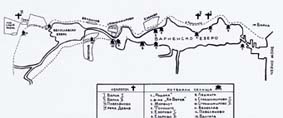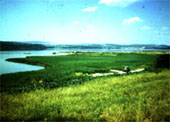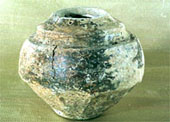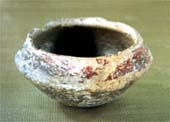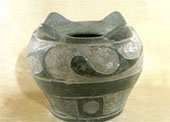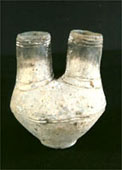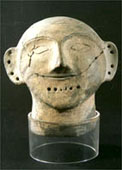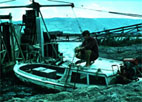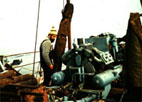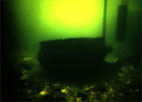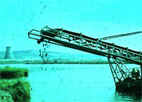|
|
|
The
Stone – Copper Age /The Eneolithic Age/.
Late Phase – second
half of 5th – first half of 4th
Millennium BC
|
|
|
At that time, the communities dwelling along
the Western Black Sea coast and around the Varna Lakes have reached
the summit of their development. The variety and perfection of the
earthenware and the idol plastics make it possible to discuss real
achievements in the fields of art and religious life of the prehistoric
man.
Interesting objects discovered in the necropolises
by the town of Devnja reveal the notions of the then people about
the after life.
During that
age, characteristic for the Varna Lakes are the 'pile dwellings' remnants
of which such as pottery, bone, flint and stone tools, small idol
figures, etc. are to be found in 2,5 m. to 8 m. under the present
water level. Most probably the dwellings were situated along the coast
of a deeply cut into the land sea bay and have been submerged by the
rising of the sea water level. The living conditions in the 'pile
dwellings' were equal to those in the inner part of the region but
obviously along the sea coast was concentrated a metallurgical center
processing copper and gold. The artifacts from these dwellings do
not defer to those from the land dwellings. Remarkable is the clay
head representing probably some local deity.
|
| À
r c h e a e o l o g i c a l m u s e u m V
a r n a |
|
www.varna-bg.com
© 1997, 2000; 2002
|
|

